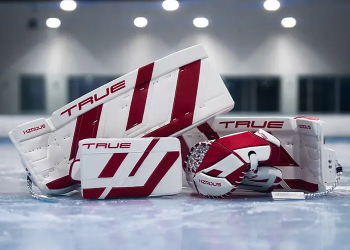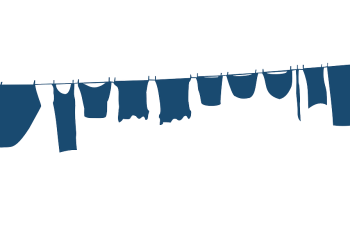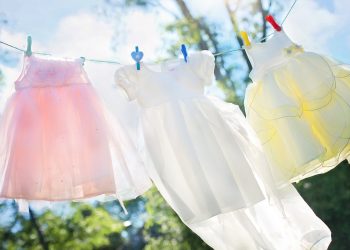In an era dominated by fast-paced consumerism, slow fashion has emerged as a meaningful alternative. Rooted in sustainability, ethics, and mindfulness, slow fashion challenges the norms of the fast fashion industry, which prioritizes quantity over quality. Here’s a comprehensive guide to understanding slow fashion, its importance, and how you can embrace it in your everyday life.
Defining Slow Fashion
Slow fashion is a movement that emphasizes thoughtful consumption and ethical production:
- Quality Over Quantity: Slow fashion prioritizes well-made garments that last for years over cheaply made items designed for short-term use.
- Sustainable Practices: It focuses on reducing environmental impact through eco-friendly materials, low-waste production methods, and responsible sourcing.
- Fair Labor: Slow fashion supports ethical working conditions, ensuring fair wages and safe environments for workers.
By adopting slow fashion, consumers contribute to a more sustainable and equitable fashion industry.
The Problems with Fast Fashion
To appreciate the value of slow fashion, it’s essential to understand the drawbacks of its counterpart, fast fashion:
- Environmental Damage:
- Producing vast quantities of cheap clothing leads to excessive waste and pollution.
- Textile production is responsible for 10% of global carbon emissions and significant water consumption.
- Labor Exploitation:
- Many fast fashion brands rely on sweatshops where workers endure poor conditions and low wages.
- Child labor and unsafe work environments are prevalent in some parts of the industry.
- Disposable Culture:
- The emphasis on ever-changing trends encourages a throwaway mentality, with millions of garments ending up in landfills each year.
Slow fashion addresses these issues by promoting responsible consumption and ethical practices.
The Benefits of Slow Fashion
Choosing slow fashion has numerous advantages for individuals, society, and the environment:
- Durability and Quality:
- Investing in well-made clothing reduces the need for frequent replacements, saving money in the long run.
- Unique Style:
- Slow fashion pieces often feature timeless designs, allowing you to cultivate a distinctive wardrobe.
- Environmental Preservation:
- Sustainable practices reduce pollution, conserve resources, and minimize waste.
- Ethical Impact:
- Supporting fair labor practices ensures that workers are treated with dignity and respect.
Slow fashion empowers consumers to make choices that align with their values.
How to Embrace Slow Fashion
Adopting slow fashion doesn’t require a complete wardrobe overhaul. Small, intentional changes can make a big difference:
- Shop Mindfully:
- Before buying, ask yourself if the item is truly needed and if it aligns with your personal style.
- Choose timeless, versatile pieces that can be styled in multiple ways.
- Invest in Quality:
- Look for well-constructed garments made from durable materials.
- High-quality clothing may cost more upfront but offers better value over time.
- Support Ethical Brands:
- Research brands that prioritize sustainability and fair labor practices.
- Certifications like Fair Trade, Global Organic Textile Standard (GOTS), or B Corp can guide your choices.
- Buy Second-Hand:
- Thrift stores, vintage shops, and online resale platforms offer unique, affordable options.
- Buying pre-loved items reduces demand for new production and gives clothing a second life.
Building a Capsule Wardrobe
A capsule wardrobe aligns perfectly with the principles of slow fashion:
- What Is a Capsule Wardrobe?
- A curated collection of essential items that can be mixed and matched to create various outfits.
- How to Build One:
- Start with basics like neutral tops, trousers, and outerwear.
- Add a few statement pieces for variety and seasonal flair.
- Focus on quality over quantity, ensuring each item is versatile and durable.
A capsule wardrobe simplifies decision-making, reduces clutter, and supports sustainable living.
Sustainable Fabrics and Materials
Choosing the right materials is crucial in slow fashion:
- Organic Cotton:
- Grown without harmful pesticides, reducing environmental impact.
- Hemp:
- A highly sustainable crop that requires minimal water and no synthetic fertilizers.
- Tencel (Lyocell):
- Made from sustainably sourced wood pulp, it’s biodegradable and soft.
- Recycled Fabrics:
- Materials like recycled polyester or nylon help reduce waste.
- Wool and Cashmere:
- Natural fibers that are durable, biodegradable, and warm.
Prioritizing sustainable fabrics ensures your clothing choices have a lower ecological footprint.
Extending the Life of Your Clothes
Taking care of your clothing is an integral part of slow fashion:
- Proper Washing:
- Wash clothes less frequently and use cold water to preserve fabric quality.
- Use eco-friendly detergents to minimize water pollution.
- Repair and Alter:
- Mend tears, replace buttons, or tailor items to extend their usability.
- Store Properly:
- Keep clothes in a cool, dry place to prevent damage.
- Use breathable garment bags for delicate items.
Caring for your clothes reduces waste and ensures longevity.
Educating Others About Slow Fashion
Spreading awareness can amplify the impact of slow fashion:
- Start Conversations:
- Share your knowledge with friends and family to inspire more mindful consumption.
- Use Social Media:
- Highlight sustainable brands, share tips, and promote the benefits of slow fashion.
- Support Advocacy:
- Engage with organizations and movements that push for industry-wide change.
Collective action can lead to a more sustainable and ethical fashion industry.
The Future of Fashion
As more people embrace slow fashion, the industry is gradually shifting toward sustainability:
- Technological Advancements:
- Innovations like 3D knitting and digital fashion reduce waste and resource use.
- Circular Fashion:
- A system where clothes are designed to be reused, repaired, or recycled.
- Consumer Demand:
- Growing awareness is encouraging brands to adopt ethical and sustainable practices.
The future of fashion lies in conscious choices that prioritize people and the planet.








